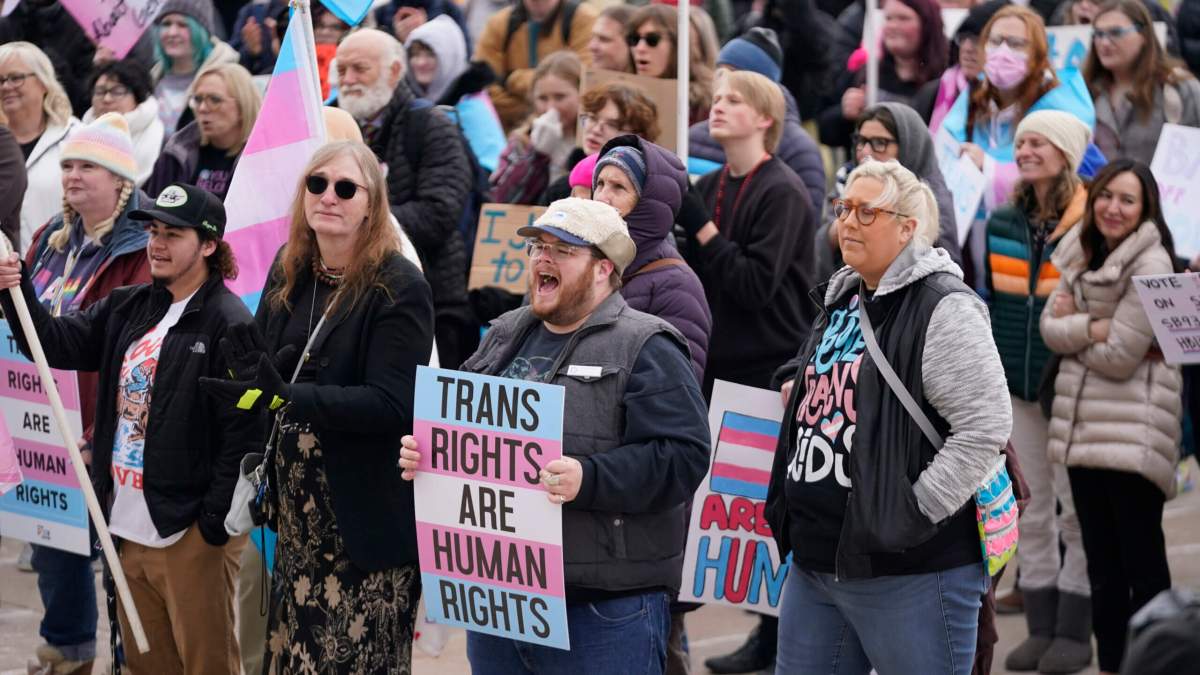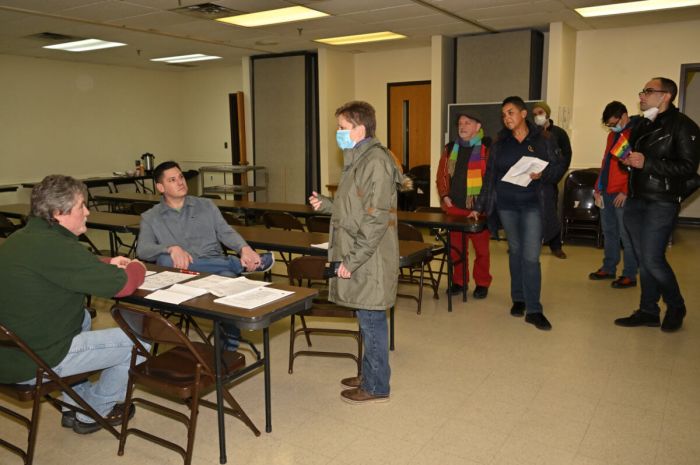New laws targeting LGBTQ+ people are proliferating in GOP-led states, but often absent from policy decisions is a clear understanding of how many people will be directly affected.
There has been relatively scant data collected on the number of LGBTQ+ residents in the U.S., particularly intersex people — those born with physical traits that don’t fit typical definitions for male or female categories. That means lawmakers are often writing laws without the same kind of baseline information they might have for other demographic groups.
“We can’t study the impact without knowing the population,” said Christy Mallory, legal director of the Williams Institute at the UCLA School of Law. The Williams Institute is a think tank that researches sexual orientation and gender identity demographics to inform laws and public policy decisions.
Here’s a look at what we know and what we don’t know about the number of people in the U.S. who are LGBTQ+ or intersex.
___
WHY DOES IT MATTER?
Legislative decisions to ban transgender women and girls from playing school sports often fail to consider the impact on intersex students.
A new Kansas law defines a person’s sex as male or female, based on what it calls the “biological reproductive system” identified at birth, leaving no room for intersex people, and ignoring the existence of transgender and nonbinary Kansans.
Meanwhile, conversations about gender-affirming care bans were at times clouded by a discredited 2018 study that claimed kids might experience gender dysphoria because of peer influence. This led to erroneous suggestions that the number of trans people was inflated.
Arguments based on the discredited study helped gender-affirming care bans pass in Georgia, Idaho and elsewhere.
“Social media and social pressures that are put on our youth, and I do think that could play into this a little bit,” said Idaho Republican Sen. Doug Ricks during a statehouse debate earlier this year. “It’s difficult. And the conflicting testimony about the studies — there’s good arguments that validate those, and others that disvalidate that.”
While most states’ bans on gender-affirming care have attempted to carve out exceptions for people who are born intersex, they could still make it harder for intersex people to receive medical care, said Erika Lorshbough, executive director of InterACT, an advocacy group that works to advance the rights of children born with intersex traits. Physicians and other medical practitioners who treat intersex people might be confused by the laws or unsure about their potential liability, especially if an intersex patient also identifies as LGBTQ+, Lorshbough said.
___
HOW MANY PEOPLE ARE INTERSEX?
Most advocacy groups estimate that 1.7% percent of people are born intersex — the equivalent of about 5.6 million U.S. residents. That estimate is based on a review published in the American Journal of Human Biology that looked at four decades of medical literature from 1955 to 1998. The estimate includes people with extra or missing sex-linked chromosomes, and those born with other physical variations that don’t fit into categories of “male” or “female.”
Intersex people are born with at least one of about 40 naturally occurring variations relating to their genitalia, internal reproductive organs, chromosome patterns or hormones.
Not all intersex people are identified as such at birth, and those who are may still be listed as either “male” or “female” on their birth certificate. That’s because only about 16 states currently allow a gender marker designation other than “male” or “female” on birth certificates, and not all hospitals have intersex-affirming policies.
Some intersex characteristics might not be evident until puberty or later — in fact, sometimes people don’t know they are intersex until they seek treatment for infertility or undergo other unrelated medical procedures. Others might only find out if they run across medical records from their childhood, because many intersex infants and children are subjected to surgeries and treatments without their consent to make their bodies conform to categories of male or female, according to the American Academy of Family Physicians. Since 2018, the AAFP has opposed medically unnecessary genital surgeries performed on intersex children.
“Some people never know they’re intersex if they have what we think of as a milder variation,” said Lorshbough. “And there are plenty of folks with variations in sex characteristics who don’t identify as intersex, and these issues impact them equally. It’s all about consent and autonomy.”
Hospitals aren’t required to track information about how many babies are born with intersex characteristics, and there has never been a nationwide survey on intersex status done by the U.S. Census Bureau, the National Institutes of Health or another government agency that normally collect demographic data, said Lorshbough.
That means there isn’t enough data to calculate a definitive population number.
___
HOW MANY PEOPLE ARE LGBTQ+?
There are more than 13 million people who are lesbian, gay, bisexual or transgender in the U.S. ages 13 and older, including about 300,000 young people and 1.3 million adults who identify as transgender, according to the Williams Institute. Nearly half of them live in states without protections from discrimination at work, in school, in housing, public accommodations and credit.
Polling by KFF and The Washington Post shows that there are nearly 2 million people nationwide who identify as transgender or trans, representing less than 1% of all adults. The poll found that most trans adults are younger than 35 years old, and the vast majority — nearly 8 in 10 — say that transitioning made them more satisfied with their life. Two-thirds of trans adults say they realized they were trans in childhood, and about one-third say they began to understand when they were 10 years old or younger.
The Census Bureau did not add questions about sexual orientation and gender identity until 2021, though it did begin collecting data about households led by same-sex couples in the 2010 census. The 2021 U.S. Census Household Pulse Survey found that 0.6% of responding adults described themselves as transgender and 1.7% described themselves as neither male, female nor trans.
The same census survey found that 4.4% of adult respondents thought of themselves as bisexual, 3.3% said they were gay or lesbian, and 88.3% said they were straight. Around 2% said they were “something else” or that they didn’t know.
___
ARE MORE PEOPLE IDENTIFYING AS LGBTQ+ NOW?
It’s difficult to tell. Efforts to quantify the number of LGBTQ+ people, including intersex people, in the U.S. were scarce until the last few decades, and stigma likely prevented some from disclosing their identities. There is some overlap between the groups; intersex people are included in the plus sign in LGBTQ+, and some intersex people also identify as gay, lesbian, bisexual, transgender or queer.
From their demographic studies in 2017 and 2022, The Williams Institute noted a slight increase in the number of young people identifying as transgender, but Mallory said additional research will give a more accurate picture.
“This kind of data collection on transgender status is very new for youth,” and some of the increase could be because more states are asking about transgender status during surveys of high school students, Mallory said. “But you know, some of it is probably youth feeling more comfortable identifying as trans.”



















